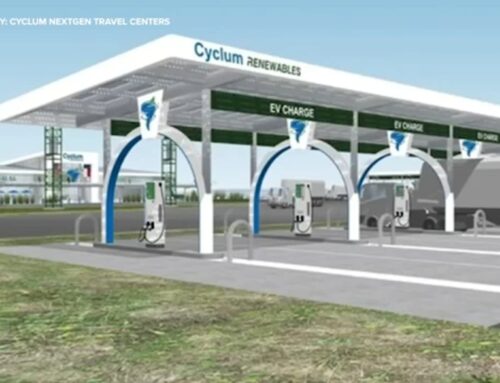Opinion: Why betting on green could be the ultimate Trump trade in 2025
January 2, 2025

Toby A.A. Heaps is the chief executive of Corporate Knights.
Most people think president Donald Trump 2.0 will be a disaster for the climate.
There is much evidence to justify this sentiment. Case in point: His pick for U.S. energy secretary, oil wildcatter Chris Wright, said last year, “There is no climate crisis, and we’re not in the midst of an energy transition, either.”
But what if a different outcome is possible?
It’s worth reviewing president Trump 1.0. Despite Mr. Trump’s promises to “bring back coal,” a record 50 coal plants were shuttered during his first term, plus there were another 51 announcements of closings as the economics of coal went into the toilet.
In terms of U.S. clean energy investments, green energy and fossil fuels ballooned across the board during Joe Biden’s presidency, but green energy as a proportion of total energy investments was not that much different than in Mr. Trump’s first term (55 per cent versus 51 per cent in each one’s last year in office).
Many people still believe that the primary factors driving demand for green power and electric vehicles are politically-driven subsidies, but that is no longer the case. Economic logic is now the primary driver. Green power and EVs have become a lot cheaper, to the point where they are now better bargains than their fossil fuel counterparts – without subsidies. Solar and wind combined with battery storage provide reliable baseload power and are now cheaper than fossil fuels in most cases.
Despite all the market imperfections, for every $1 invested in fossil fuels worldwide, $2 is now invested in clean energy, while electric or hybrid vehicles now account for more than half of new vehicles sold in China, the largest auto market in the world.
ESG accountability ramps up for businesses
There are three factors that matter most to climate solutions:
1. Red tape: 2,500 gigawatts of green energy in the United States are in limbo waiting for grid connection permits, roughly double the entire installed U.S. electricity generating capacity.
2. Interest rates: They represent up to 40 per cent of renewable energy costs when rates are high.
3. Oil prices: When the price of oil goes up, it increases the earnings, economic clout and political power of oil and gas companies.
In other words, if you have less red tape to tangle up green energy projects, lower costs of capital and lower oil prices (so Big Oil has less cash in its jeans to tip the political scales), then you get more climate solutions deployed.
And there is a wild card this time: Elon Musk, who recently reiterated his long-standing mission to achieve national and individual energy independence underpinned by a vertically integrated sustainable-energy ecosystem.
Consider three factors that may work in favour of clean power:
1. Mr. Musk’s new role in the White House overseeing a vast deregulation agenda will not be all good news for the environment. Fossil fuel projects will be green-lit faster, but renewables will benefit too, and we already know they have the cost competitiveness to be market winners.
2. Mr. Trump loves low interest rates (and he is happy to twist the Federal Reserve’s arm as required) because they buoy stock markets (potential inflationary effects of U.S. tariffs be damned).
3. Mr. Trump is obsessed with cheap gasoline for U.S. motorists. Recall that the stock market value of major oil and gas companies was cut in half during Mr. Trump’s first term, a stark contrast to the 100-per-cent increase during Mr. Biden’s presidency.
Bottom line for climate action: president Trump 2.0 is not a blanket negative and could be an inadvertent net positive on the sway he holds over the world’s march toward a climate solutions economy.
If you believe in economic logic, the takeaway is that the right time to go all in on the energy transition was yesterday. The second-best time is now, and that’s true no matter who is president of the United States.
Search
RECENT PRESS RELEASES
Related Post




